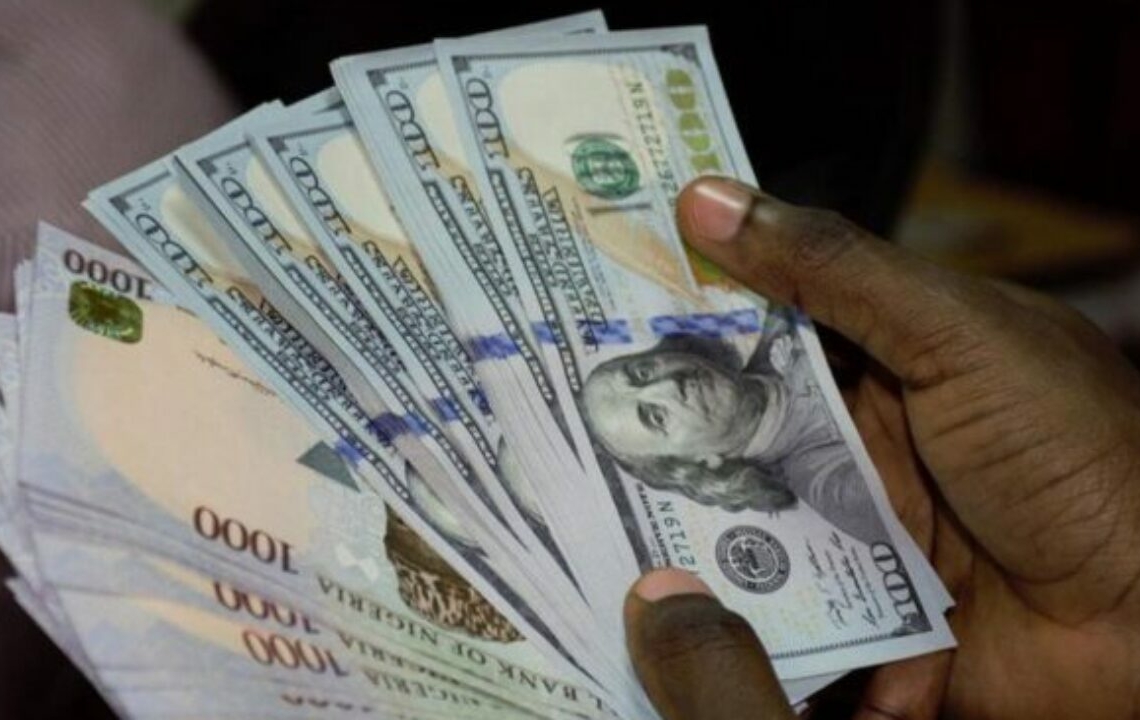Business
Pressure On Naira Moderates As Dollar Supply Increases Slightly

The pressure on naira moderated on Wednesday as it gained 0.95 percent against the dollar at the parallel market following a slight increase in dollar supply.
At the close of trading on Wednesday, the local currency stood at N787.50 per dollar, compared to N795/$1 at the parallel market the previous day.
Nigeria’s currency has been wobbling in recent days at the unofficial market. It lost 3.14 percent of its value on Tuesday after appreciating against the dollar last week.
The naira fell to 795/$1 on Tuesday from N770/$1 on Monday at the parallel market in Lagos, Abuja and Kano.
At the Investors and Exporters (I&E) forex window, it depreciated by 0.15 percent as the dollar was quoted at N446.67 as against the last close of N446.00.
Most currency dealers who participated at the FX auction on Tuesday maintained bids between N432.00 (low) and N447.00 per dollar (high).
The continued depreciation of the naira followed increased dollar pressure as evidenced in rising FX utilisation but less supply.
Data from the Central Bank of Nigeria (CBN) show that the total utilisation of foreign exchange by various sectors of the economy increased by 21 percent quarter-on-quarter (q/q) and 64 percent year-on-year (y/y) to $8.3 billion in the second quarter (Q2) of 2022.
The increase, according to a report by FBNQuest, was mostly attributable to a substantial rise in FX usage for invisibles, which climbed to $3.7 billion from $2.5 billion the previous quarter.
Despite the marked rise in invisibles, merchandise imports/goods still accounted for the bulk of FX usage at about $4.6 billion or 55 percent of the total. However, its growth was a modest 6 percent q/q.
According to the report, the major driver behind the marked q/q growth in invisibles is FX usage by the financial services sector which grew by 66 percent q/q to $2.8 billion. Its share of total invisibles increased to 76 percent up from 67 percent in Q1 2022.
The next largest usage of FX within invisibles was for other services, which increased to $270 million during the quarter from $179 million in Q1.
FX use for educational services, also one of the largest within the invisibles segment, also grew 13 percent q/q to $246 billion.
Foreign exchange utilisation for goods, imported items for the industrial sector which accounted for the largest share of visible imports fell 2 percent q/q to $2.2 billion.
The report noted that its large share was underpinned by industrial firms’ heavy reliance on imported raw materials, machinery, and equipment.
Imports of food products increased by 27 percent q/q to $675 million. This is mostly a reflection of the upward trend in global inflation, as well as the naira’s decline, especially on the parallel market, where some importers source a portion of their foreign exchange needs.
In spite of the rise in total foreign exchange utilisation, the report stated that the aggregate figure of $8.3bn for Q2 is still tracking below the $11.4bn average for the eight quarters to Q1 2020.
This is a function of the paucity of FX supply due to dwindling forex inflows as reflected in the sharp drop in gross official reserves in recent months.
Nigeria’s gross external reserves, which give the CBN the firepower to defend the naira, lost 8.07 per cent or $3.27 billion in over 10 months to settle at $37.25 billion at the start of November from $40.52 billion at the beginning of the year.
“Low inflows of foreign investments into the economy in the face of a challenging business environment will trigger further depreciation in the exchange rate due to pressure on the local currency and raises concerns for the Central Bank,” analysts at Cowry Asset Management Limited said.
Source: Business Day
Send Us A Press Statement Advertise With Us Contact Us
And For More Nigerian News Visit GWG.NG


